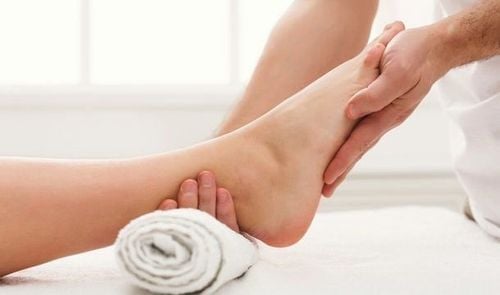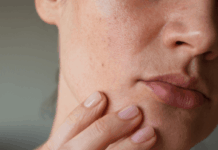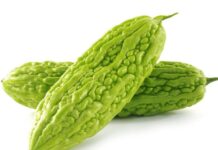1. Hydrate Your Hands and Feet Daily
Moisturizing your hands and feet during the colder months is crucial. Apart from your face, your hands and feet require equal attention to prevent dryness and cracking. To ensure your skin stays supple, opt for lightweight, easily absorbable moisturizers. These products will provide ample hydration without leaving a greasy residue.
For severely dry hands or feet, look for products containing deep moisturizing ingredients such as glycerin, shea butter, or coconut oil. While these creams may have a slightly shiny finish, their moisturizing capabilities are exceptional. Remember to pat your skin dry after washing and immediately apply moisturizer to lock in softness throughout the day.

Moisturizing your hands and feet is essential during the colder season.
2. Exfoliate Regularly
Regular exfoliation helps remove dead skin cells, revealing brighter, smoother skin that can better absorb moisturizers. You can exfoliate with specialized scrubs or create your own natural scrub at home by mixing brown sugar with olive oil.
For particularly dry and cracked heels, try soaking your feet in warm water mixed with lemon and salt. This will help soften and cleanse your skin. After soaking, gently buff away dead skin with a pumice stone to reveal softer feet. Aim to do this consistently, about twice a week, to combat dry skin.
3. Protect Your Skin from Dryness
To prevent dryness, opt for mild, fragrance-free soaps and body washes that won’t strip your skin of its natural moisture. Products containing natural ingredients such as aloe vera or olive oil will help protect your skin’s moisture barrier.
Hot water can also contribute to dry skin, so stick to warm water for bathing and washing your hands. When working with harsh cleaning chemicals, don protective rubber gloves to shield your skin from their drying effects. Additionally, consider using a humidifier in your home to add moisture to the air, which will help counteract the drying effects of indoor heating.

Natural products containing aloe vera or olive oil help protect the skin’s moisture.
4. Treat Your Feet to a Natural Mask
To transform dry, cracked heels, try using ripe bananas or papayas as a natural foot mask. These fruits are rich in vitamins and nutrients that deeply moisturize and soften the skin. Simply mash the fruit and apply it to your heels for about 15 minutes before rinsing.
Honey is another excellent natural remedy for healing and hydrating the skin. Its antibacterial properties help cleanse and soothe the skin, keeping your feet soft. Coconut oil is also a great option, as it provides intense moisture and helps soften the skin after a relaxing foot soak.
5. Stay Hydrated from Within
In addition to external moisturizing, don’t forget to hydrate your body from within. Drinking ample water not only promotes healthy skin but also regulates body temperature, aids digestion, and flushes out toxins. Opt for water, herbal teas, or fresh fruit juices to stay hydrated throughout the day.
6. Nourish Your Skin with a Balanced Diet
A healthy diet plays a significant role in maintaining glowing, supple skin. Some skin-nourishing foods include:
Fatty Fish: Salmon and tuna are rich in omega-3 fatty acids, which help combat dry skin and promote skin hydration.
Avocados: Avocados contain healthy fats and vitamin E, which protect the skin from external damage and maintain its suppleness.
Bananas and Cucumbers: Both are excellent for hydration due to their high water content and vitamin profile.
Does CO2 Fractional Laser Treatment for Acne Scars Really Work? Insights from Em May Skin Center
“Scarred skin, particularly the pitted variety, can be a source of deep insecurity for many. The uneven texture and noticeable indentations can make one self-conscious, relying on temporary cover-ups and feeling anxious about close-up photos or intimate interactions. This common skin concern can become a significant hindrance in one’s pursuit of holistic beauty and confidence.”



































